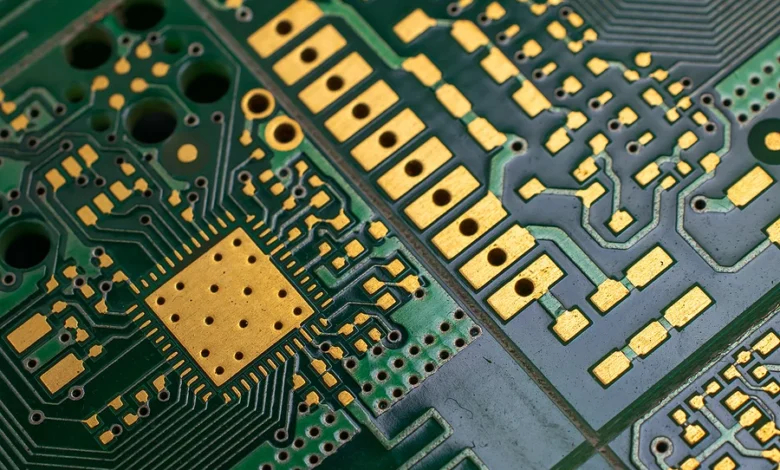Unlocking the Secrets of HS Code for Electronics

An HS Code, or Harmonized System Code, is a standardized numerical method of classifying traded products. It is a globally recognized system used by customs authorities around the world to identify products when they are imported and exported. The HS Code consists of six digits, with the first two digits representing the chapter or category of the product, and the remaining four digits providing a more specific description.
The primary purpose of the HS Code Electronic is to facilitate international trade by establishing a common language for classifying goods. It allows for the uniform application of customs tariffs, collection of trade statistics, and monitoring of controlled products. The HS Code system is governed by the World Customs Organization (WCO) and is updated periodically to reflect changes in trade patterns and the emergence of new products.
History and Development of the HS Code System
The Harmonized Commodity Description and Coding System, commonly known as the Harmonized System (HS), is a globally standardized nomenclature for classifying traded products. Its origins can be traced back to the Customs Cooperation Council (now known as the World Customs Organization or WCO), which was established in 1952 to enhance the effectiveness of customs administration.
In the early 1970s, the Council recognized the need for a harmonized system to facilitate international trade negotiations and the collection of trade statistics. After years of collaboration between contracting parties, the HS was introduced in 1988 and entered into force on January 1, 1988.
The HS is governed by the WCO, an independent intergovernmental body with 183 member countries as of 2022. The WCO manages the HS Convention, which provides a legal basis for the system and ensures its uniform interpretation and application worldwide.
Over the years, the HS has undergone periodic revisions to keep pace with technological advancements and changes in trade patterns.
Structure and Logic of HS Codes
The Harmonized System (HS) codes follow a logical and hierarchical structure to classify goods systematically. The coding system consists of six-digit codes, with the first two digits representing the chapter, the next two digits representing the heading, and the final two digits representing the subheading.
The HS codes are organized into 21 sections, each covering a broad category of goods, such as live animals, vegetable products, mineral products, and machinery and mechanical appliances. Within each section, there are numerous chapters, each represented by a two-digit code. For example, Chapter 84 covers “Nuclear reactors, boilers, machinery, and mechanical appliances,” and Chapter 85 covers “Electrical machinery and equipment and parts thereof.”
Each chapter is further divided into headings, represented by four-digit codes. These headings provide a more specific description of the goods within the chapter.
The coding principles of the HS system follow a logical progression from general to specific, with each additional digit providing more granular information about the product. This hierarchical structure allows for consistent and standardized classification of goods worldwide, facilitating international trade and customs procedures.
HS Codes for Electronics
The Harmonized System (HS) has dedicated chapters and subheadings for various types of electronic products and components. Some of the key HS code chapters and sections related to electronics include:
Chapter 84: Nuclear reactors, boilers, machinery and mechanical appliances; parts thereof
- Electrical motors, generators, transformers, and converters
- Batteries and accumulators
- Electrical wiring, cables, and insulated conductors
- Household appliances like refrigerators, washing machines, and vacuum cleaners
- Consumer electronics like televisions, radios, and audio/video equipment
- Telecommunications equipment like phones, modems, and antennas
- Electronic integrated circuits and microassemblies
- Diodes, transistors, and semiconductor devices
- Electrical capacitors and resistors
This chapter covers a significant portion of the electronics industry, from components to finished products.
Chapter 90: Optical, photographic, cinematographic, measuring, checking, precision, medical or surgical instruments and apparatus; parts and accessories thereof
This chapter includes various electronic instruments and apparatus used for measurement, testing, and precision applications, such as oscilloscopes, multimeters, and other laboratory equipment.
Common HS Codes for Electronic Products
Some commonly used HS codes for electronic products include:
- 8517: Telephone sets, including smartphones
- 8528: Monitors and projectors, receiving apparatus for television
- 8471: Automatic data processing machines (computers)
- 8542: Electronic integrated circuits
- 8544: Insulated wires, cables, and other insulated electric conductors
- 8536: Electrical apparatus for switching, protecting, or making connections to electrical circuits (e.g., relays, fuses, switches)
It’s important to note that the specific HS code for a product depends on its exact nature, components, and intended use. Manufacturers and exporters/importers must carefully review the HS code nomenclature and legal notes to ensure accurate classification.
Importance of Accurate HS Code Classification
Assigning the correct HS code to electronic products is crucial for several reasons. First and foremost, it ensures compliance with international trade regulations and customs procedures. Proper classification enables the accurate calculation and payment of applicable tariffs, duties, and taxes, preventing potential penalties or legal issues.
HS codes also play a vital role in trade statistics and data analysis. Governments, industries, and organizations rely on these codes to track import and export trends, monitor trade flows, and make informed decisions regarding trade policies and strategies. Inaccurate classification can lead to distorted trade data, hampering effective decision-making processes.
Furthermore, HS codes serve as a universal language for identifying and classifying products in international trade. They facilitate communication and understanding among traders, customs authorities, and other stakeholders, reducing ambiguity and streamlining trade processes. Proper classification ensures that all parties involved have a clear understanding of the products being traded, enabling efficient logistics, compliance, and risk management.
In the electronics industry, where products are constantly evolving and new technologies are emerging, accurate HS code classification is essential for maintaining product traceability and ensuring regulatory compliance. Misclassification can result in incorrect tariff rates, potential legal issues, and supply chain disruptions, ultimately impacting profitability and competitiveness in the global market.
Challenges in Classifying Electronics
The rapid pace of technological advancements in the electronics industry presents significant challenges in accurately classifying products under the Harmonized System (HS) codes. As new technologies emerge and electronic devices become increasingly multifunctional, determining the appropriate HS code can be a complex task.
One of the primary challenges lies in the classification of multi-function devices. Many modern electronic products, such as smartphones, tablets, and smartwatches, combine various functionalities into a single device. These devices may incorporate features like communication capabilities, computing power, multimedia playback, and even health monitoring sensors. Determining the principal function or the function that gives the product its essential character can be a subjective and challenging endeavor.
Another challenge arises from the ambiguities and overlaps within the HS code nomenclature itself. The HS system, while comprehensive, may not always keep pace with the rapid evolution of technology. As new products and technologies emerge, they may not fit neatly into existing code categories, leading to potential misclassification or disputes over the appropriate code assignment.
Furthermore, the classification of electronic components and parts can be particularly complex.
Classification Tools and Resources
Classifying electronics under the appropriate HS code can be a complex task due to the constant evolution of technology and the need for precise interpretation of the code descriptions. Fortunately, there are several tools and resources available to assist in this process.
Explanatory Notes: The World Customs Organization (WCO) provides Explanatory Notes that serve as a comprehensive guide for interpreting and applying the HS codes. These notes offer detailed explanations, examples, and clarifications for each code heading and subheading, helping to ensure consistent classification across different countries.
Classification Opinions: Many customs authorities, including the WCO, issue classification opinions or rulings on specific products or scenarios. These opinions provide valuable insights into how customs officials interpret and apply the HS codes, serving as a reference for traders and importers.
Online Databases: Several online databases and search engines are available to help users navigate the HS code system. These tools often include features such as keyword searches, code descriptions, and cross-references to related codes or legal notes. Some popular online resources include the WCO’s HS Browser, the European Union’s TARIC database, and various national customs websites.
By leveraging these classification tools and resources, businesses can improve their understanding of the HS code system, stay up-to-date with changes and interpretations, and ensure accurate classification of their electronic products for import/export purposes.
Case Studies: HS Code Classification of Electronics
Classifying electronics under the correct HS code can be a complex task due to the constantly evolving nature of technology and the wide range of products within the electronics industry. Here are a few case studies that illustrate some of the challenges and considerations involved in HS code classification for electronics.
Smartphones
Smartphones are a prime example of the intricacies involved in HS code classification. These devices combine various components and functionalities, such as telecommunications equipment, computers, cameras, and multimedia players. Determining the appropriate HS code requires a thorough understanding of the product’s principal function and the rules governing the classification of composite goods.
Printed Circuit Boards (PCBs)
PCBs are essential components found in numerous electronic devices, ranging from computers to household appliances.
Renewable Energy Electronics
The growing demand for renewable energy solutions has led to the development of various electronic products, such as solar panels, inverters, and charge controllers. The classification of these products often requires consideration of their specific function, materials, and the level of integration with other components.
3D Printers and Related Components
3D printers have become increasingly popular in various industries, from manufacturing to healthcare.
In each of these case studies, proper HS code classification requires a deep understanding of the product’s technical specifications, intended use, and the specific rules and guidelines provided by the Harmonized System. Collaboration between manufacturers, importers, customs authorities, and trade experts is often necessary to ensure accurate classification and compliance with international trade regulations.
Impact of HS Codes on the Electronics Industry
The Harmonized System (HS) codes play a crucial role in the electronics industry, facilitating trade, enabling market analysis, and informing policy decisions. These standardized codes have a significant impact on various aspects of the industry.
Trade Facilitation
HS codes streamline international trade by providing a universal language for classifying goods, including electronic products. This standardization simplifies customs procedures, reduces delays, and enhances the efficiency of cross-border transactions. By accurately classifying electronic goods, businesses can navigate complex tariff structures, comply with import/export regulations, and optimize supply chain operations.
Market Analysis
HS codes serve as a valuable tool for market research and analysis in the electronics industry. By tracking trade data based on specific HS codes, businesses can gain insights into market trends, consumer demand, and competitive landscapes. This information enables informed decision-making, product development strategies, and targeted marketing efforts.
Policy Implications
HS codes play a pivotal role in shaping trade policies and regulations related to the electronics industry. Governments use these codes to implement tariffs, quotas, or other trade measures, aimed at protecting domestic industries or promoting specific economic objectives.
The accurate classification of electronic goods under the appropriate HS codes is essential for businesses operating in the industry. Failure to comply with HS code regulations can result in costly penalties, delays, or even seizure of goods.
Future Developments and Revisions
The Harmonized System (HS) is a living document that undergoes periodic reviews and revisions to adapt to the ever-changing global trade landscape. As new technologies emerge and industries evolve, the World Customs Organization (WCO) works closely with its member countries to ensure the HS Code remains relevant and accurately reflects the latest developments.
One of the anticipated changes in the near future is the increased focus on harmonizing HS Codes for emerging technologies, such as artificial intelligence (AI), robotics, and nanotechnology. As these cutting-edge fields continue to grow and impact various industries, including electronics, there will be a need to establish clear and consistent classifications to facilitate international trade.
Revisions
Additionally, the rise of the Internet of Things (IoT) and the integration of electronics into everyday objects and devices may necessitate revisions to existing HS Codes or the creation of new ones. The WCO recognizes the importance of staying ahead of these technological advancements to ensure seamless cross-border trade and accurate data collection.
Increased collaboration and alignment among customs authorities can help reduce trade barriers and facilitate smoother international transactions.
In the realm of electronics, the rapid pace of innovation poses challenges for HS Code classification. New product categories, such as wearable devices, smart home appliances, and advanced computing components, may require dedicated HS Codes or revisions to existing ones to accurately capture their unique characteristics and functionalities.
As the world becomes increasingly digitalized and interconnected, the WCO and its member countries will continue to work towards adapting the HS Code system to meet the evolving needs of the global trade community, ensuring that it remains a reliable and effective tool for classifying goods, including the ever-changing landscape of electronic products.





